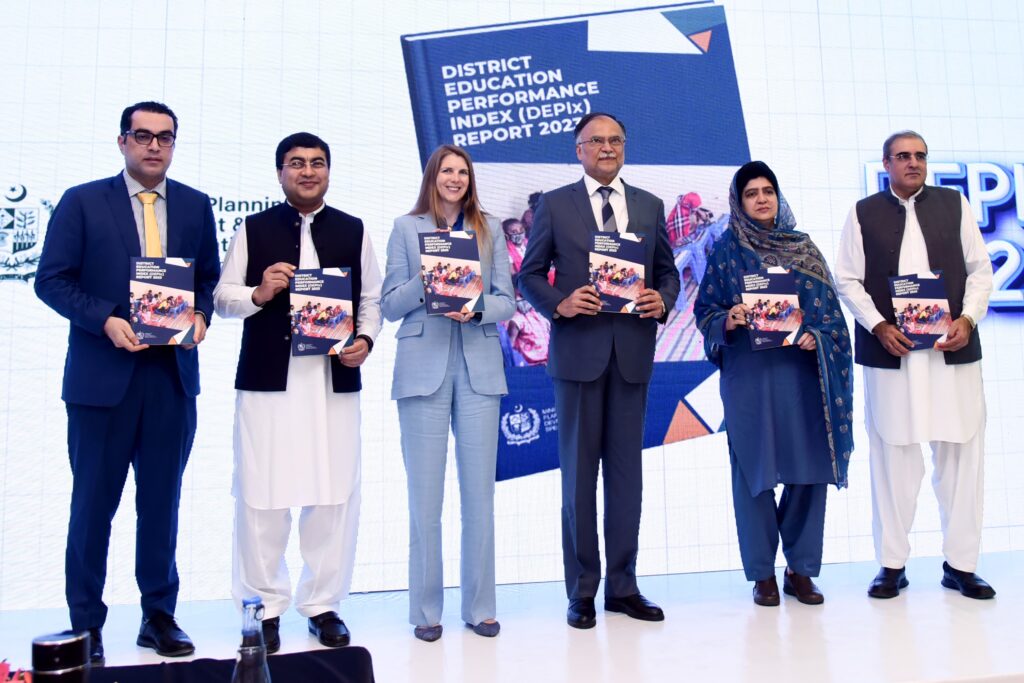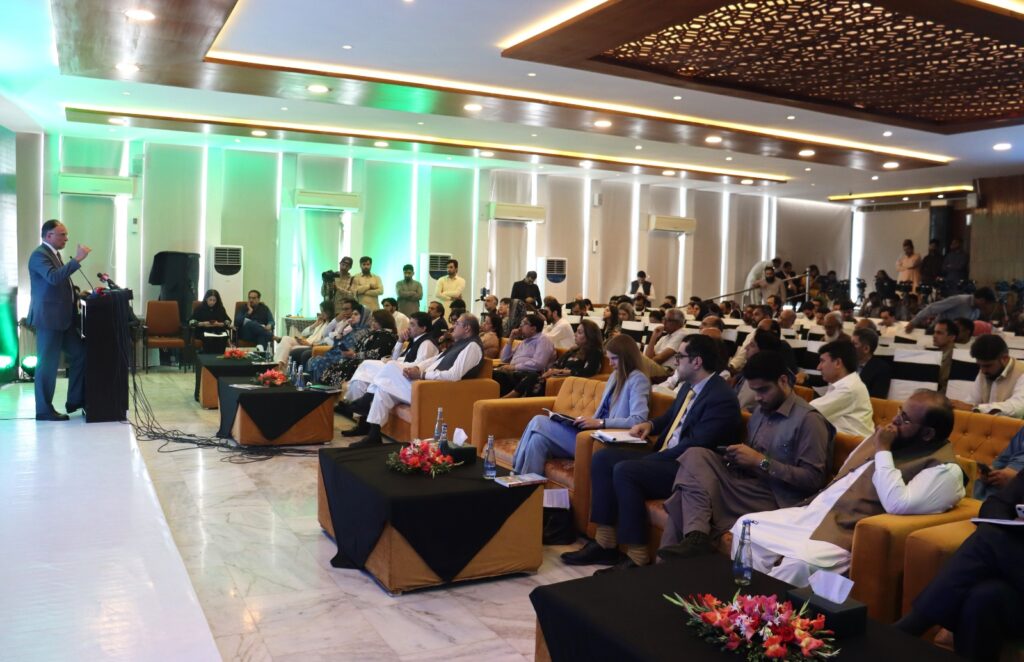
Islamabad : Minister for Planning and Development Ahsan Iqbal has announced to establish a state-of-the-art Teachers Training Center in Islamabad to improve education quality.
He said the center will be the best in South Asia.
Ahsan Iqbal said memorization-based education is irrelevant in the modern era, where innovation and creativity derived development.
Citing examples from the world, the Minister said no single country has attained development and prosperity without achieving at least a 90 percent literacy rate.

“Pakistan’s national average score on the index is a modest 53 out of 100, placing the country in the ‘Low’ performance category,” according to the report Compiled by the Planning Commission in collaboration with international experts and government agencies.
The report is the first of its kind to measure district-level education performance, focusing on key outcomes such as access, learning, equity, governance and inputs like infrastructure and public financing.
Ahsan Iqbal said Pakistan’s 124 districts have scored an average of 53 percent in education, with no district falling into the high-performance category except Islamabad.

The report highlighted issues such as lack of Internet access and the diminishing role of technical institutions in education.
The minister said the declining quality of education has led to decreased enrollment in government schools and stressed the need for revolutionary measures like providing Internet access in schools, ensuring technological education and increasing digital literacy.
He also informed that Prime Minister Shehbaz Sharif has recently established a task force to on education emergency. He said, a five-year plan would be shared with the provinces.
Sharing additional findings of the report, he acknowledged the progress Pakistan has made in human capital development but noted that the pace remains slower compared to other emerging economies and regional peers.
“These findings serve as a sober reminder that much more needs to be done to improve education outcomes across the country. We are in an era of knowledge revolution where the intellectual capital of the nation determines its destiny,” he observed.
Ahsan Iqbal stressed that Pakistan’s education indicators lagged behind those of peer countries and stated “Unless we achieve 90 percent literacy and universal primary enrollment, we cannot enter the development arena.”
He emphasized the importance of fostering creativity, critical thinking, problem-solving, and teamwork skills in children and vowed to bring 25 million out-of-school children into the education system.
The report, which covered 134 districts including Islamabad Capital Territory (ICT) and all districts in Balochistan, Khyber Pakhtunkhwa (KP), Punjab, and Sindh, classifies districts into four categories: Very High, High, Medium, and Low.
According to the index, Punjab emerged as the top performer with a score of 61/100, followed by Khyber Pakhtunkhwa with 55/100. Sindh and Balochistan trailed with scores of 51.5/100 and 46/100, respectively. None of the provinces reached the “High” or “Very High” performance categories, with both Punjab and KP falling into the “Medium” category.
The index also highlighted significant disparities across different domains of the education system.
Nationally, the highest score was achieved in the Infrastructure & Access domain (59/100), indicating progress in expanding educational opportunities.
However, the report noted that actual access figures might be higher, particularly in urban centers with a strong presence of private schools, which were not fully accounted for due to data limitations.
The Inclusion (Equity & Technology) domain also scored relatively well.
Conversely, Public Financing recorded the lowest score among all domains, underscoring the urgent need for increased and better-targeted public spending in education.
The Learning domain also performed poorly, reflecting persistently low student outcomes.
The Governance & Management domain remained in the “Low” category, primarily due to teacher shortages and high bureaucratic turnover.
The index revealed substantial differences not only between provinces but also within them, highlighting strengths and weaknesses in various aspects of their education systems.
For instance, Punjab outperformed other provinces in Infrastructure & Access (73) and Inclusion (75) but ranked lower in Public Financing and Governance & Management during the period of 2021-23.
Khyber Pakhtunkhwa led in Public Financing and Governance & Management but lagged behind in Learning outcomes. Sindh showed relative strength in Public Financing, where it ranked highest, but struggled in Infrastructure & Access and Governance & Management. Balochistan faced challenges across all domains, ranking lowest overall, with slightly better performance in Learning.
Alarmingly, none of the 134 districts assessed fell within the “Very High” performance category, and only Islamabad ranked in the “High” category, making it the best-performing district nationwide.
Nearly two-fifths of the districts (58) were categorized as “Medium,” with Punjab contributing 32 of these districts, followed by KP with 17, and Sindh with 8. However, more than half of Pakistan’s districts (76) were classified as “Low” performers.
These low-performing districts were predominantly in Balochistan and Sindh, with Balochistan having 33 and Sindh 22, further highlighting significant inter-provincial disparities in education.
The report also uncovered stark disparities within provinces. Khyber Pakhtunkhwa exhibited the most significant intra-provincial differences, with districts like Haripur, Chitral, and Abbottabad among the top performers, while Kolai Palas, Upper Kohistan, and Lower Kohistan were among the lowest.
Punjab and Balochistan showed the least Internal variation, with Punjab’s districts generally falling into the “Medium” category and all of Balochistan’s districts in the “Low” category.
Sindh displayed moderate variation, with most districts in the “Low” category, except for the urban districts of Karachi and Hyderabad.